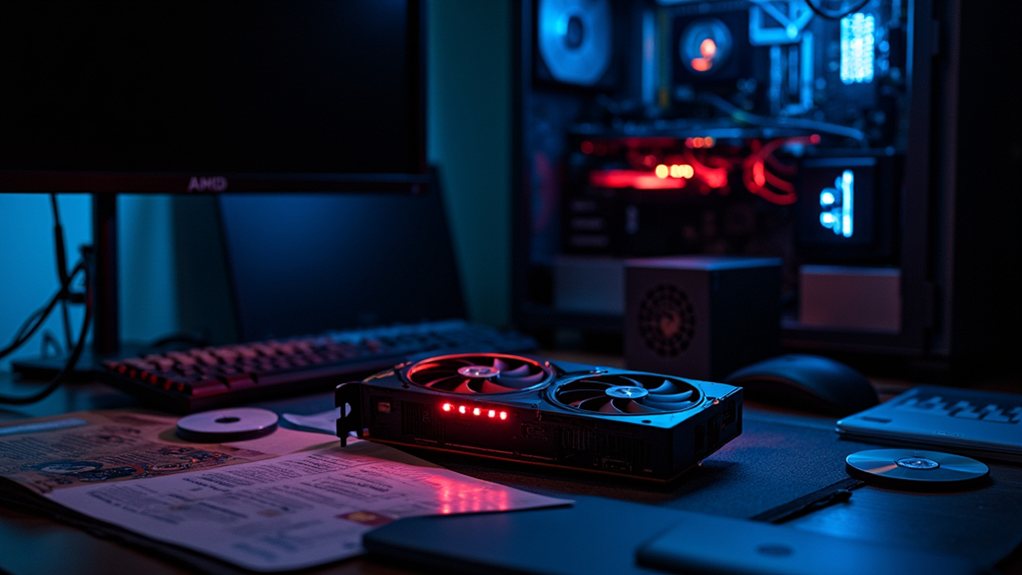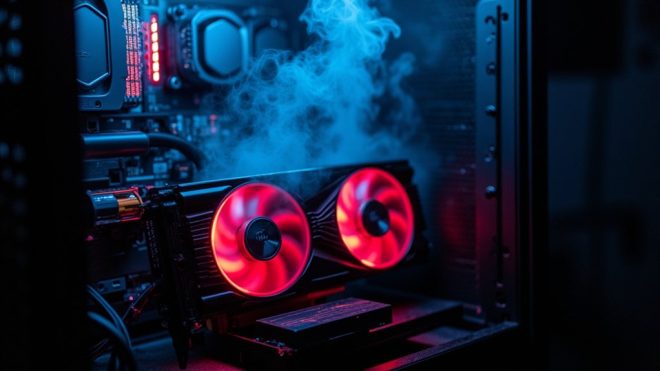AMD’s driver installation woes continue plaguing Windows 10/11 users, with persistent Error 1720 and compatibility issues disrupting system performance. The problems primarily affect AMD hardware configurations, requiring elaborate workarounds like Display Driver Uninstaller (DDU) and clean boot procedures. As community-developed solutions offer temporary relief, questions mount about AMD’s driver testing processes and long-term stability. Resolving these technical hurdles could make or break AMD’s market position.

The root causes read like a tech support nightmare bingo card. From insufficient administrator rights triggering Error 1720 to mysterious network-related Error 1316 messages, users are facing a gauntlet of obstacles that would make even seasoned IT professionals break into a cold sweat.
What’s particularly telling is that these issues seem distinctly tied to AMD hardware – swap in an Nvidia card under identical conditions, and suddenly those installation gremlins vanish into thin air.
The problems don’t stop at initial installation either. Microsoft’s Windows updates have developed an unfortunate habit of playing demolition derby with AMD’s Adrenaline and Catalyst drivers, often breaking functionality post-installation. Many users have found that uninstalling current drivers through Device Manager is necessary before attempting any new installations.
This game of digital cat-and-mouse has left users scrambling for workarounds, with many turning to third-party solutions like Display Driver Uninstaller (DDU) just to perform what should be a routine update. Users are strongly advised to disable anti-virus software during installation to prevent potential conflicts with the process.
Technical solutions do exist, though they’re far from user-friendly. Clean booting Windows, disabling VPNs, and performing elaborate driver removal rituals have become necessary steps rather than last-resort troubleshooting measures.
The fact that users need to disable Windows’ own device installation features to prevent driver breakage speaks volumes about the depth of these compatibility issues.
Perhaps most concerning is the apparent hardware incompatibility between certain AMD graphics cards and specific motherboard chipsets or processors.
These conflicts manifest in ways that can leave even experienced users scratching their heads, as the same system configurations work flawlessly with competing hardware.
It’s a situation that raises serious questions about AMD’s driver testing and validation processes.
The silver lining, if there is one, comes in the form of community-developed solutions. Manual driver downloads from AMD’s official site, combined with meticulous installation procedures, have proven more reliable than automatic detection tools.
Yet, the fact that users need to resort to such measures for basic functionality suggests a deeper problem that needs addressing.
As AMD continues to push impressive hardware innovations, the company’s ability to deliver stable, reliable driver support may eventually determine whether these technical achievements translate into real-world success.
Final Thoughts
As AMD works to address ongoing installation challenges for their drivers, users are encouraged to utilize official troubleshooting guides and consider clean installations during upgrades. The feedback from the community has led AMD to focus on enhancing driver stability in future updates. While these issues can be frustrating, they highlight the intricate balance between advanced hardware capabilities and software reliability. For optimal performance, patience and adherence to proper installation procedures are essential.
If you need assistance navigating these challenges, the Emotional computer team is here to help. Don’t hesitate to reach out for support. Click on our “Contact Us” page to get in touch with us today!

